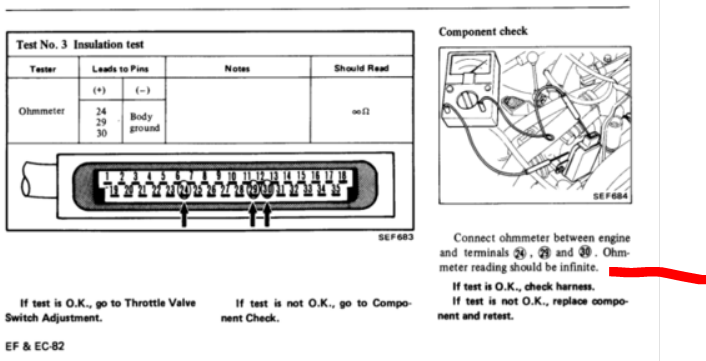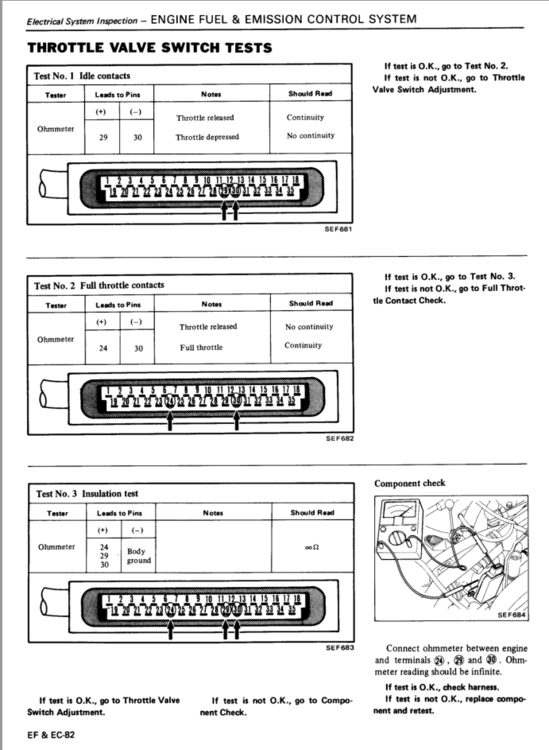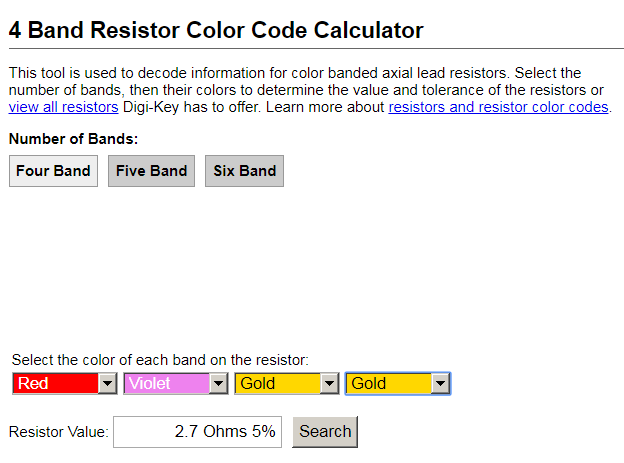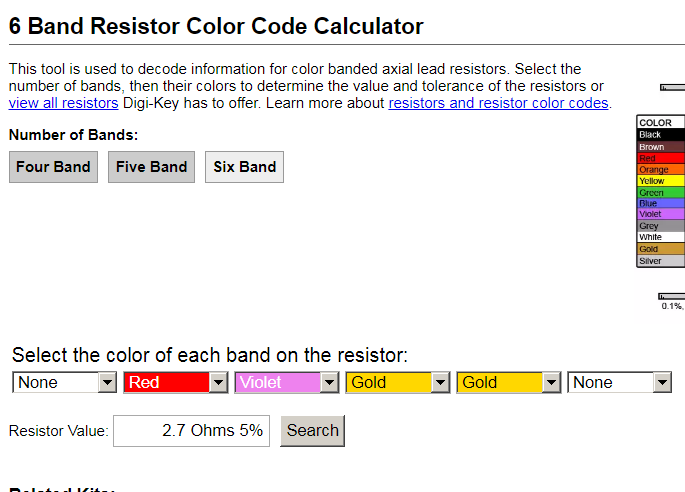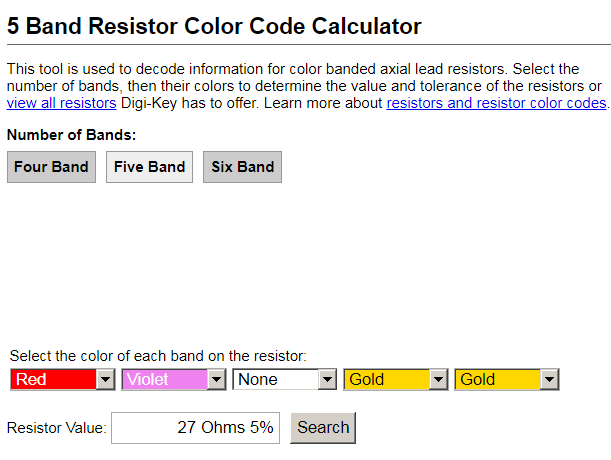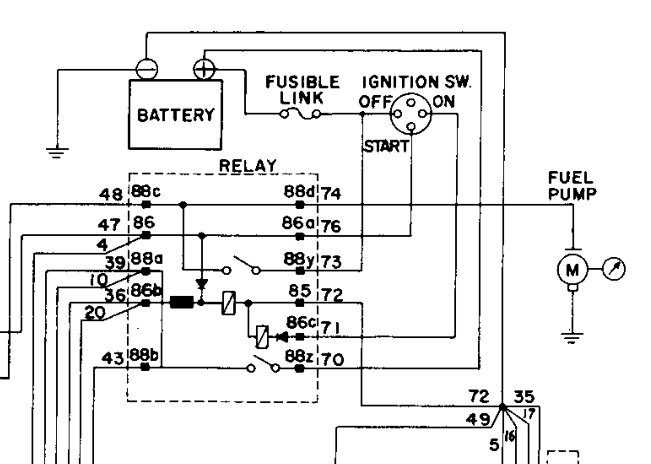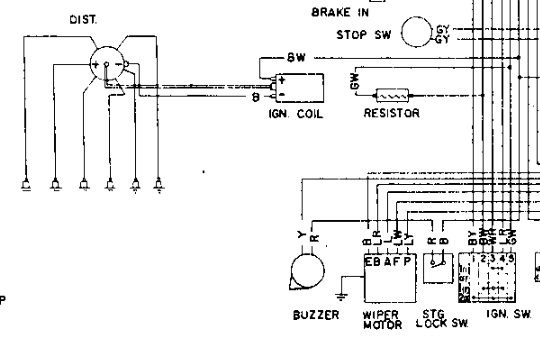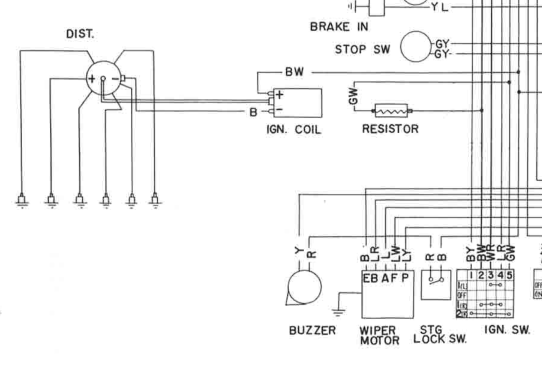Everything posted by Zed Head
-
Thinking about trying to rebuild a 5 speed for the first time
For the prices you're looking at it might be most effective to just put the two new seals in, install it, use Redline MT90, and see how it works. I think that you can replace the countershaft bearing pretty easily if you wanted to do one bearing also. It's the noisy one. Once it's in if you'll get a better idea of how much it needs. Odds are, if a synchro is bad, it will be just the 3rd gear synchro. The others will probably be fine, and probably better quality, worn, than new aftermarket synchros. Edit - I'm a slow typer...
-
Happy Halloween
They weren't even supposed to be in the playoff. Trump must have had a hand in it.... Still...enjoy. I though Saban was coaching LSU anyway... zing
-
Without a 240Z after 5 years
I just see NASCAR junk at 10:00. Says "live". Not sure how that works. Edit: maybe you meant 9 hours. Watching now... Yes, 9 hours, 57 minutes. Edit 3 - that video is addictive... can't believe what some of those old beaters are selling for. People paying for their high school memories...
-
Without a 240Z after 5 years
Seems like the right auction. Many interesting cars there. I'll bet the weather made a mess of things though. Hope you got a good price..
-
Without a 240Z after 5 years
You should have told us so we could pick it apart while the auction happened. This is the one? https://www.mecum.com/lots/FL0118-311093/1971-datsun-240z/
-
Ignition Coil Wiring 1972 240Z
Must be a 72 thing -
-
Clutch slave reservoir
It might have been leaking for quite while, a drip at a time, until it finally got empty enough to stop working. The cylinder with the reservoir is the master cylinder. The slave cylinder is on the passenger side of the transmission. The dust boot on the slave cylinder can hold a lot of fluid, and any leaks would show up more in the area under the starter. If you slide the dust boot off of the slave cylinder a bunch of fluid might squirt/leak out. There's no clamps it's just a flexible seal that you can peel off by hand. I had a bad slave cylinder on my 280Z and the boot was full but there was no large leak. There's a rubber boot on the master cylinder too. It protrudes in to the cabin, you can see it from inside. So, like SteveJ says, the fluid can end up inside. And, the reservoirs can get loose and leak. Or crack. The fluid will drop down in to that dirty dusty area under the cylinder in the engine bay.
- 1976 280Z Restoration Project
-
Hesitation during acceleration
That's a "pass". Open circuit (infinite resistance) to ground, on all three. I'm guessing that your ECU connector test is going to be a "pass" also. The clamp on the return line might not work if the pump is struggling. The gauge will tell. Everything about the EFI electronics revolves around a controlled and predetermined fuel pressure. The ECU programming is based on it.
-
1976 280Z Restoration Project
I didn't really see a problem with adding strips of rubber to a loose bushing. In use, because it's so thick, the precision of the fit is almost irrelevant. If you put a camera on it you'd probably see it squishing and deforming pretty dramatically. The fit is more for recentering everything, after the squishing during cornering, I think.
-
1976 280Z Restoration Project
I was going to say the same. I'll add that my MSA kit came with Ground Control bushings, apparently. There were instructions from them for one of them. They're black. I could not get the gap to close completely even with grease, but the clamps were fully tightened. I left it that way, figuring that the movement from usage would level things out pretty quickly, with the lubrication, and it did. 1976 280Z
-
Hesitation during acceleration
To be sure, can you describe how you did the test or show a picture? With the TVS off of the engine you'd have to connect one of your leads to the mounting plate, since that would be the path to ground. With everything installed you can run that test at the ECU connector by placing the negative lead on a good ground point then testing each of the three pins. And, to be very sure, you want no reading on your meter, like it's waiting for you to do something, or a very very high one, in ohms. If you had a test light it wouldn't light, or a test beeper it wouldn't beep.
- Hesitation during acceleration
-
Hesitation during acceleration
If the ECU doesn't see it it doesn't count. Trace the wires from the ECU to the TVS, it's easier than it seems. Most of the engine's electronic components are on sub-harnesses with bullet connectors tying in to the main harness to the ECU. Maybe yours are disconnected. "Full throttle" is actually about 75% throttle opening or something like that so it could be a factor. The ECU adds a lot of extra fuel at "full" throttle. " " " " " The ECU plug has its own grounds. The FSM tests are explicit, nothing needs to be added. Place the probes and read the meter.
- Hesitation during acceleration
-
Fuel injection relay internal resistor value?
The colors are definitely red, violet, gold, gold. Seems like a pretty big gap between 2 and 3. That's why I picked "none" in a 5 band. But, apparently, the bands start and end on the bumps at the ends of the resistor. I'm learning. So, pick 4 or pick 6 and you get the same 2.7. I went ahead and measured it with a Fluke and got a 3.1 ohm reading. Minus the .3 to .4 lead resistance gives 2.7 to 2.8 ohms. Minutiae.
-
Fuel injection relay internal resistor value?
Did you add an extra "0" by accident? I got a different number. If I go with a four band the number gets even smaller. So, with a more time for the subconscious to think, I'm thinking the resistor is to reduce sparking at the fuel pump relay switch contacts in the AFM. They are so tiny.
-
Fuel injection relay internal resistor value?
Just remembered that I have a fried 76 relay sitting in the vicinity of me. Here's a picture. Don't know the color codes off the top of my head. It's the only one in there.
-
Fuel injection relay internal resistor value?
Not sure it's hugely critical. It just needs to pass enough current to close the fuel pump relay. Pin 36 is power back (to ground) from pin 39 through the fuel pump relay contact switch, if I read the diagram right. Not an electrics guy but the relay coils usually have about 50-60 ohms resistance. I think that they pull about about 0.3 amps. Just working from memory on past current draw problems, through relays. That combined relay is a weird mamajama. After hurting my brain looking at it I decided that I don't even know why that black rectangle is there. Seriously, why is it there. The relay coil provides resistance. Beside that, I think that somebody would have to disassemble a relay to measure its resistance. I'm assuming the black rectangle is what you're talking about.
-
ignition wiring
Download away. Sorry if all you have is a phone. They're not as smart as the phone makers make them out to be. http://www.classiczcars.com/files/category/11-240z/
- ignition wiring
-
ignition wiring
Here's the diagram from the Body Electrical chapter, from the downloadable file on the site. BE-4. Sorry to be so in-your-face but it really was in my face as soon as I looked at it. It's from 1970 though.
-
Bringing a 1977 Z back life
Forgot to mention the distributor. If the breaker plate bearings are good. A very common failure, especially when they sit. You should probably remove and clean your distributor before the little plastic bearing cage breaks. There are many little things that can be saved with a little preventive work. Clean the alternator air openings and oil the bearings, for example. Stuff most of us never did when we first started our old cars.
-
ignition wiring
Is it a 71 or does it have a 71 build date? Have you looked at the 72 diagrams? There aren't many wires. A multimeter would answer a lot of questions. The B/W wires are probably the Start and Run power to the coil. Y is probably the temperature sender. B is usually ground.
-
Bringing a 1977 Z back life
The AFM and ECU won't be "correct" for the year but they'll work in your car. Good to have for testing if you find running problems later. Depends on cost of course. The combined EFI/fuel pump relay also. The FPR if it's cheap. Check the injectors, they might be newish. Exhaust manifold if you can get it off without snapping the three studs. Clutch parts - the 225 mm flywheels are NLA now for the most part. Half-shafts if the u-joints are in good shape and they don't want too much. If you can pick up cheap parts they're good to have, just in case. Later, when you need to remove something and break a stud you'll have the replacement ready.





